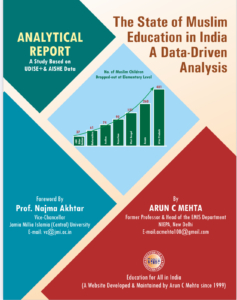AI-Driven Education Solutions for Rural India: Aligning with NEP 2020
Introduction
Rural India faces persistent challenges in delivering quality education, from teacher shortages to inadequate infrastructure. The National Education Policy (NEP) 2020 envisions technology as a cornerstone for transforming education, particularly in underserved regions. Artificial Intelligence (AI) offers innovative, scalable solutions to bridge these gaps, empowering rural students with access to equitable and inclusive learning opportunities. This article explores how AI-driven tools can align with NEP 2020 to revolutionize education in rural India, drawing on data from UDISE+ and government initiatives.
Main Content
The National Education Policy (NEP) 2020 envisions an equitable, inclusive, and technology-driven education system to transform India into a knowledge superpower. In rural India, where access to quality education remains a challenge due to infrastructure deficits, teacher shortages, and socio-economic barriers, Artificial Intelligence (AI) offers innovative solutions to bridge these gaps. By aligning AI-driven tools with NEP 2020’s goals, rural education can be revolutionized, ensuring access, equity, and quality for millions of students.
NEP 2020 emphasizes technology integration to enhance learning outcomes, particularly in underserved areas. AI-driven education solutions can address rural India’s unique challenges, such as limited access to trained teachers and learning resources. According to UDISE+ 2021–22 data, rural schools account for 85% of India’s total schools, yet only 47% have functional computers. AI can overcome these limitations by delivering scalable, cost-effective, and personalized learning experiences.
One key AI application is personalized learning platforms. Tools like adaptive learning apps (e.g., BYJU’S, Vedantu) use AI algorithms to tailor content to individual student needs, aligning with NEP 2020’s focus on competency-based education. In rural areas, where students often face varied learning levels due to inconsistent schooling, AI platforms assess a student’s progress and deliver customized lessons in subjects like mathematics or science. For instance, AI-driven apps can provide multilingual content in regional languages like Hindi, Tamil, or Bengali, addressing NEP’s emphasis on mother-tongue education. These tools require minimal infrastructure—often just a smartphone—making them viable for rural settings, where mobile penetration is high (93% as per TRAI 2023).
AI-powered virtual tutors and chatbots further democratize education. Platforms like Google’s Bolo or Microsoft’s AI tutors can assist students in remote areas by answering queries, explaining concepts, and providing practice questions. These tools align with NEP 2020’s push for digital infrastructure, such as the DIKSHA platform, which can integrate AI to offer interactive learning modules. For rural teachers, often overburdened with large classes, AI tools can automate grading and provide teaching aids, enabling them to focus on pedagogy, as advocated by NEP’s teacher training reforms.
Another transformative solution is AI-driven content creation for localized curricula. NEP 2020 encourages contextual learning rooted in local culture and needs. AI tools like ChatGPT or QuillBot can generate lesson plans, worksheets, or stories incorporating rural India’s cultural contexts, such as agricultural practices or local folklore. This fosters engagement among students who may find urban-centric textbooks unrelatable. Additionally, AI translation tools can convert educational materials into regional languages, ensuring inclusivity for non-English medium schools, which constitute 70% of rural institutions (UDISE+).
However, challenges remain. Limited internet connectivity in rural areas (only 34% of villages have 4G coverage, per TRAI) and high costs of AI tools pose barriers. NEP 2020’s Samagra Shiksha scheme can address this by funding digital infrastructure, such as solar-powered computer labs or offline AI apps. Ethical concerns, like over-reliance on AI or data privacy, must also be tackled through clear guidelines, as emphasized by the India AI Mission.
Concluding Observations
AI-driven education solutions hold immense potential to transform rural India’s education landscape, aligning seamlessly with NEP 2020’s vision of equity and innovation. By leveraging personalized learning, virtual tutors, and localized content, AI can empower rural students and teachers, overcoming infrastructural and socio-economic barriers. However, successful implementation requires addressing connectivity issues, ensuring affordability, and promoting ethical AI use. Collaborative efforts between government, EdTech firms, and communities, supported by initiatives like Samagra Shiksha, can make AI a catalyst for inclusive education, paving the way for a brighter future for rural India.
References
- Mehta, A. C. (2025). AI in Indian School Education: Challenges, Curriculum, & Teacher Training. Education for All in India.
- Mehta, A. C. (2025). Transforming Indian School Education by 2030: The Role of AI and Data-Driven Insights. Education for All in India.
- Mehta, A. C. (2023). School Education in India: Challenges, Solutions, & Government Initiatives 2023. Education for All in India.
- Government of India. (2020). National Education Policy 2020. Ministry of Education. https://www.education.gov.in.
- Telecom Regulatory Authority of India (TRAI). (2023). Annual Report 2022–23. https://www.trai.gov.in/
- IndiaAI. (2024). Revolutionizing Primary Education in Rural India: The Role of AI. https://indiaai.gov.in.
- NASSCOM. (2023). India’s EdTech Market Report 2023. https://nasscom.in/


